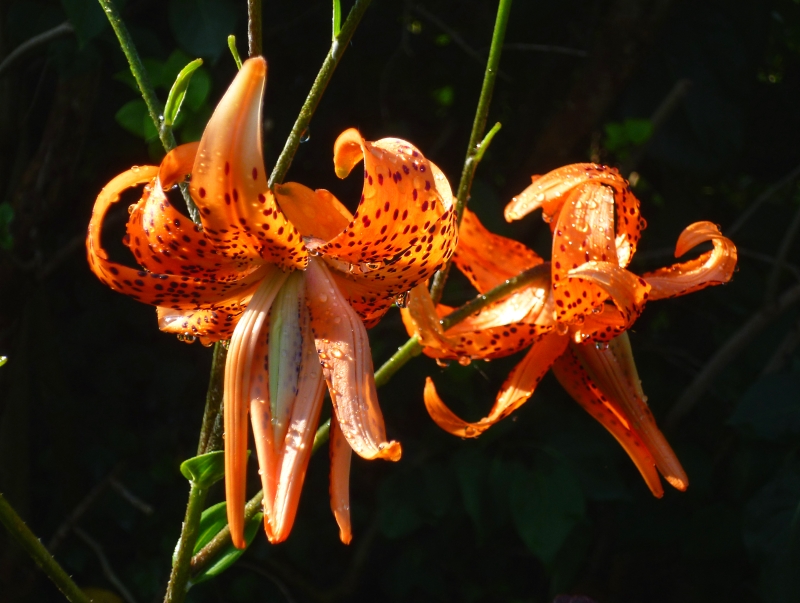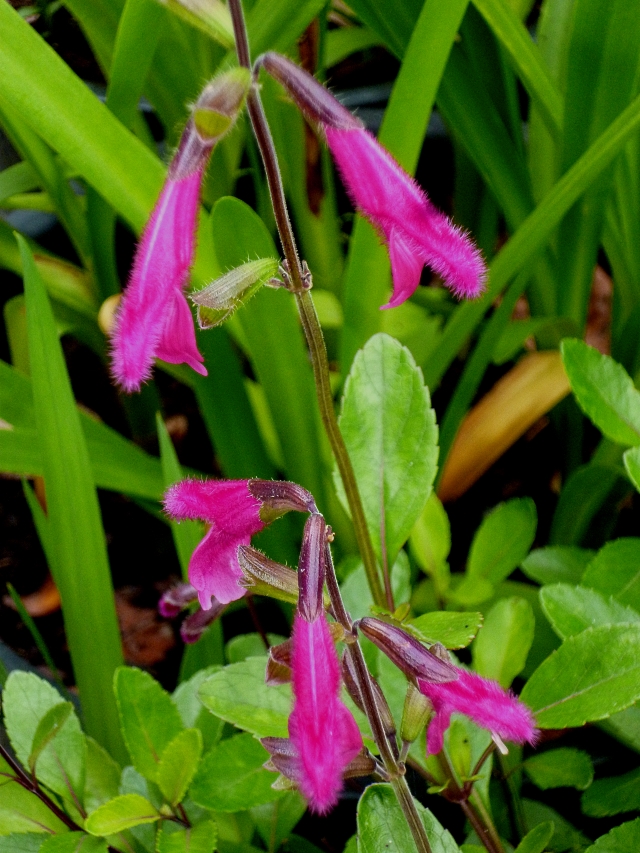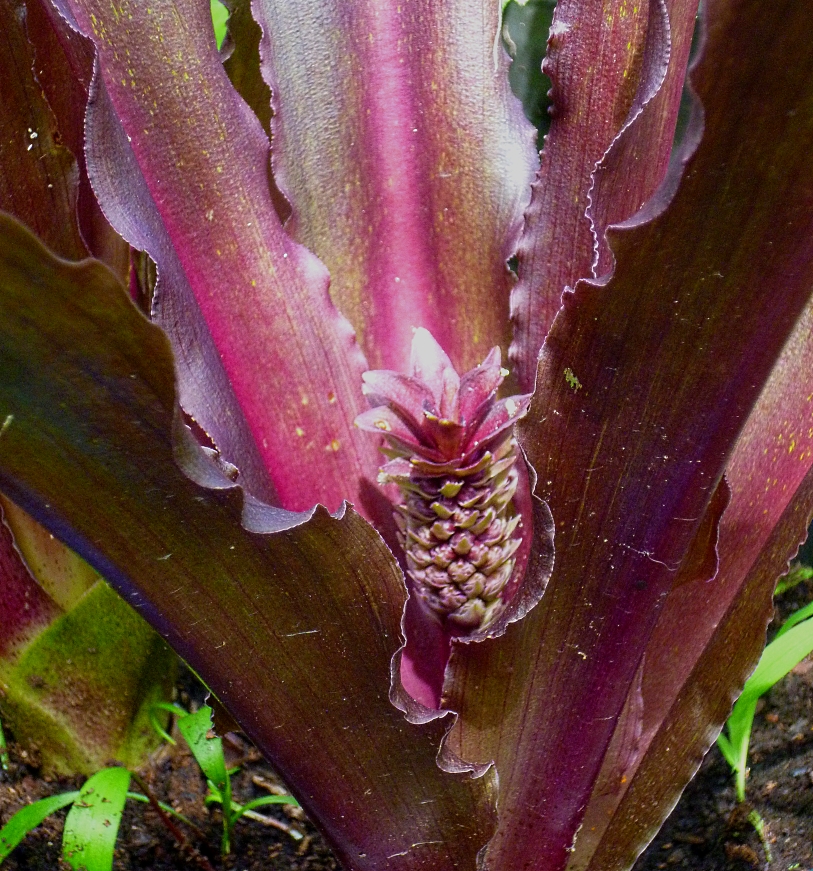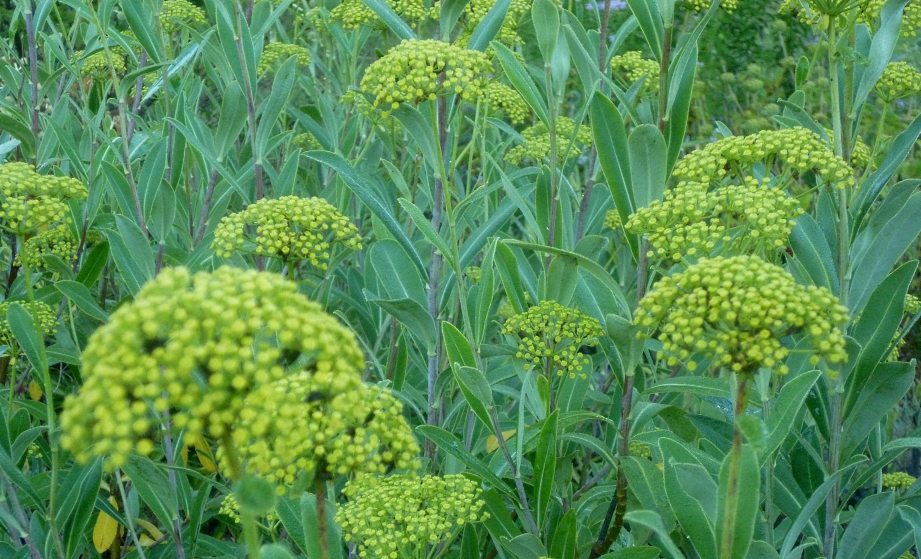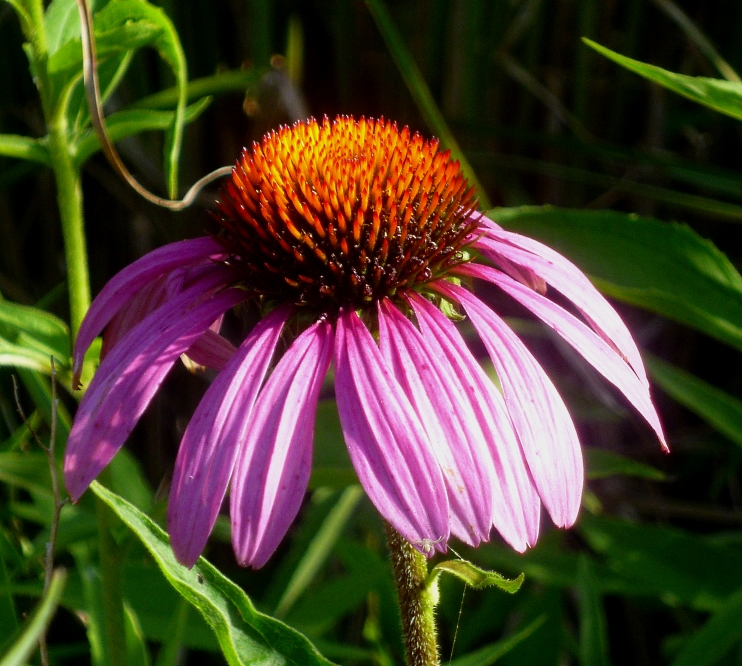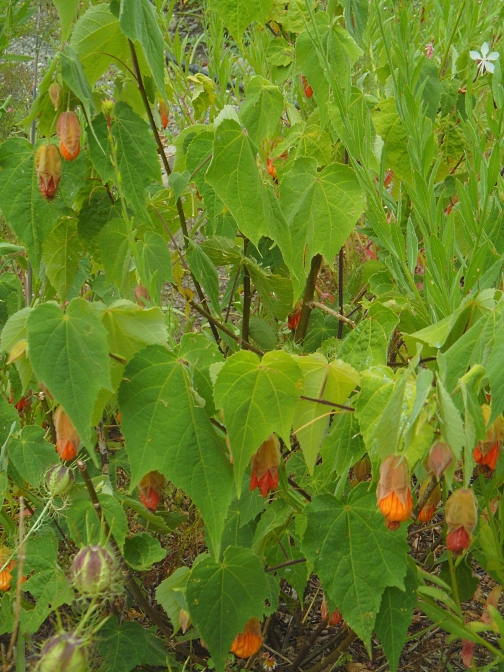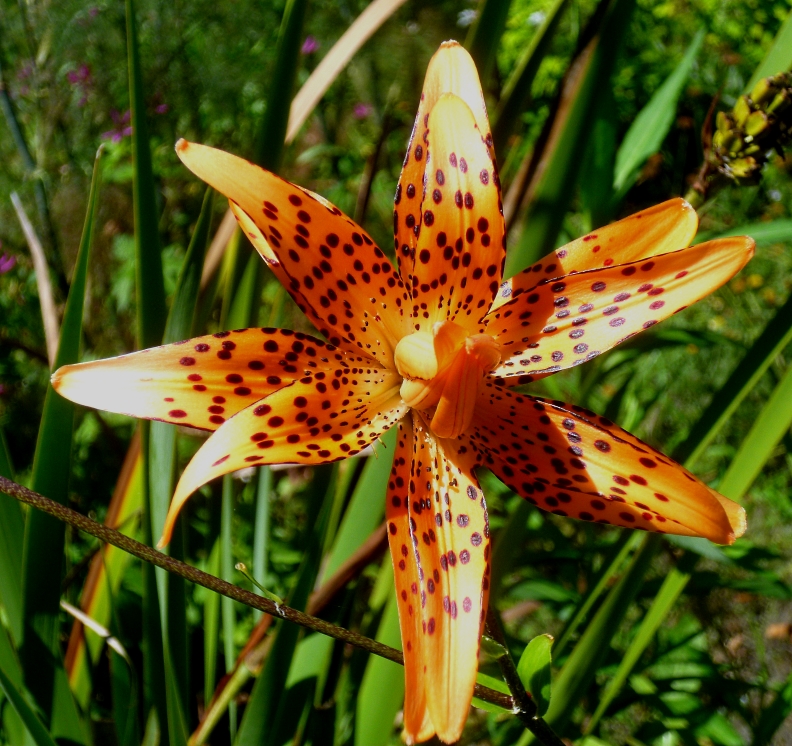
The Barn Garden has had a hard time this summer- largely drowned out in the late Spring, then doing mortal combat with very ambitious bindweed fed by all that rain, and, only now, is it slowly coming back to itself. Truthfully, it is largely a Spring garden, with some roses bringing up the rear, and then, after the blistering heat last year, I have done some replanting to increase the interesting, but tough, shrub population and reduce the more vulnerable herbaceous perennials. Not much you can do about the bindweed in my view. It is native to the rocky, recovered ground that forms the Barn Garden, and will appear in any summer, though not usually as strongly as this year. I yank out armfuls just so that I can’t see it, but beyond that, I am not up for any other response.
The Colquhounia coccinea is a bit of a straggler and got very bashed by all the spring and early summer storm activity- but whilst it may bow down, it usually picks itself up after a few days of recovery. But the orange vermillion flowerspikes with just a flash of yellow are so pretty that I don’t care that the rest of it isn’t an oil painting. It has flowered a bit earlier than usual this year, tempted by the rain I think.
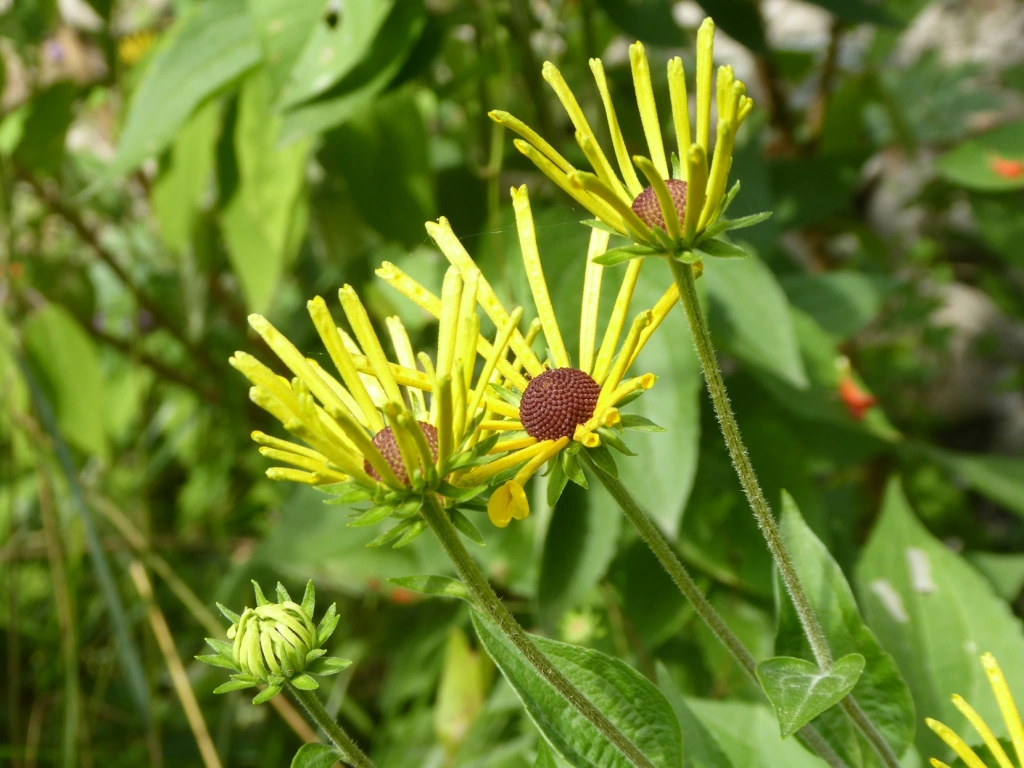
‘Henrik Eilers’ is one of my alltime favourites, and a really good Rudbeckia. It doesn’t look like much at the start, but it shoots up in height to a good 2m, and then flowers like a firework with these elegant quilled flowers in neat groups. If it likes the conditions, not too hot, not too dry, but nothing special in terms of soil, it clumps up quickly. In 3 years, it will be looking very fit from a tiny plant. Be careful though when the shoots start coming, as they do look very much like weed activity that you may not want in the garden. I use a stick marker to remind myself not to go to war with it.

So, against this, now pink painted, wall, I had planted 2 baby Pawlonia tomentosa. I was hoping for about 3m growth off them, but the one you can see in the backgound of the photograph, has easily made 5m and has found open sky. The other one got chopped in half by the storms, and then has tried to catch up but has run into the tree overhang from next door. I think therefore the other one has to go sadly. My fault, I never imagined that despite being coppiced to the ground in the late Autumn, they would grow so big. I should have worked it out- the Pawlonia is the fastest growing tree on the planet. It might be a 2 person job with 2 pickaxes to get the no 2 out- later in the year.
But a happier story with Anemone ‘Honorine Jobert’. I bought 3 tiny plants 3 years ago, and they really strugged with the heat and the dry, and didn’t grow much at all. But I knew they could do it, in spite of all the sites that tell you this Anemone needs shade and damp, if you can get the plants to hang on, they will take anything in the heat and dry department. There were several old clumps around the hottest bits of the garden in Tostat that never flinched whatever the heat. This is their best year yet in the Barn Garden, thanks to the restorative effects of all the rain we have had. They will be lovely very soon.
I grew the chocolate Eupatorium as an experiment. Grew them on to a decent size and then planted them out this Spring. They are a bit collapsed from the storms, and I should have, but haven’t, propped them up a bit. But I am hopeful for the beautiful vanilla umbel-type flowers soon. And then you would not believe the following is another Eupatorium…
Eupatorium capillifolium ‘Elegant Feather’ is absolutely lovely, I adore it. Fresh feathery foliage, no flowers to speak of, and a distinctive upright form. Again, I grew them on from tiny, and then planted them out. I would have more and I will.

I dug up and replanted my growing Eucomis family this Spring, and they have done much better in the courtyard out in the open. The flowerheads are so heavy with the rain-inspired growth that they have begun plaiting themselves!
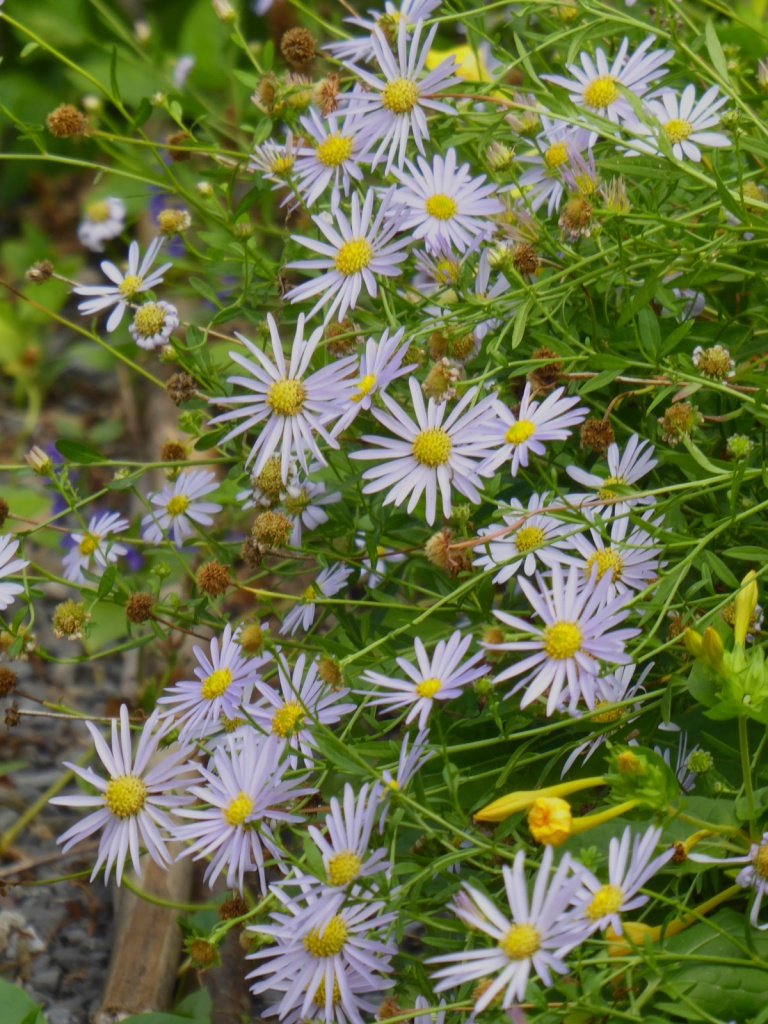
Kalimeris incisa ‘Madiva’ is such an obliging later-in-the-summer plant, happy anywhere except very dry, and a delicate mauve colour with a jolly golden centre. No trouble and they gently spread. I infinitely prefer them to any Michaelmas daisy.
A month or so ago, I was mourning the demise of my second Acanthus sennii plant, which had got a bit lost in the jungle of the Barn Garden. Mourning was premature. Look what has turned up all on it’s own.







